Theology Reconsidered: An Introduction
What follows is the Introductory chapter from a newly published, two Volume work entitled Theology Reconsidered. The book can be purchased from Lambert publishing via their website; Volume I here and Volume II here.
When looking at the first mythological and philosophical works from antiquity, it is very easy to get lost in the “facts” surrounding these ancient works and lose sight of their true meaning and import to the people and cultures within which these works emerged from and out of. Much of the modern academic and scholarly literature concerning these ancient “theo-philosophical” works falls into this category. To a large extent, the purpose of this work is to try and “recover” said meanings of these ancient works as much as possible, and to look at them within a much broader theological, mythological and philosophical narrative that we find throughout Eurasia in the first millennium BCE, the so-called “Axial Age” of modern man.
In order to do this, we take a primarily intellectual journey through the mind of ancient man, as he sees the world and as is reflected in the earliest literary evidence of man, trying to understand these works not only within the broader “Eurasian” context, but also trying to look at them through the eyes of the ancient philosophers, theologians, priests and scholars who wrote these ancient texts, or in many cases were the ones to “compile” or “transcribe” these longstanding theo-philosophical traditions, but also to try and understand them within the theological, intellectual and socio-cultural context within which these works arose. This broader meaning we call knowledge, which from a modern philosophical perspective is referred to as epistemology.
This knowledge is what Philo Judaeus takes great pain to describe in his exegesis of the Pentateuch, Genesis in particular, what the Neo-Platonists take pains to describe in their literature which arises in defense of their doctrines as Christianity takes root and begins to supplant and snuff out their schools of learning and wisdom, it is what is alluded to in the so-called hidden, or unwritten, teachings of Plato and that which is hidden, kept secret, by the followers of Pythagoras and also in the Eleusinian mysteries and the alchemical Hermetic doctrines attributed to Hermes Trismegistus, and also what the Upanishads refer to as Brahmavidyā, or knowledge of Brahman, that from deep antiquity is believed to be passed down from teacher to disciple – as Plato refers to in his Seventh Letter as that which is “brought to birth in the Soul, as light that is kindled by a leaping spark, and thereafter nourishes itself.”.[1]
After the author completed his first major work, the Snow Cone Diaries, we considered the writing “experiment” complete, the Work was done. Following that exercise, and for reasons we cannot completely explain, we found it necessary to flesh out some of the ideas therein, reflecting a continued interest, and ultimately curiosity, concerning the advent, development, and evolution of what we term theo-philosophical developments of mankind which abound in the historical record, following the intellectual journey as it were up until modern times, what we refer to herein as the Information Age, where Information is at our finger tips, where activity is “informed” by its surroundings (Quantum Theory), and yet while we all for the most part (and in particular in Western academia) ignore the wisdom of the ancients.
The Snow Cone Diaries was somewhat manufactured in the sense that it was intentionally modelled after one of the most influential books that the author has read written by a modern self-proclaimed “metaphysician”, or philosophologer (i.e. one who studies philosophy) named Robert Pirsig entitled Zen and the Art of Motorcycle Maintenance, initially published in 1974 but which the author encountered and read during the summer between his freshman and sophomore years in college, years of great tumult and change for most, the author being no exception.
After college, as is documented in Snow Cone Diaries, the author spent several years pursuing a career in professional tennis which in the end amounted to more so than anything else a time period of intense reading and personal analysis and introspection that led the author, in a manner that can perhaps best be described as “chance”, or if you believe in such things, Fate as it were, to Eastern philosophy and mysticism. The author had been prepared for this adventure somewhat as he had majored in Ancient History as an undergraduate at Brown University and had written his thesis on the “Origins and Influence of Hermetism”. In a sense then, the author’s initial, and now very persistent and long lasting, foray into Eastern mysticism was a natural extension of the intellectual pursuits of his undergraduate years.
The impetus and source of the author’s interest in Eastern philosophy, Kuṇḍalinī Yoga specifically in fact, stemmed primarily, at least at the beginning, from an interest in the mental and psychological demands of the game of tennis at the professional level, where many matches were determined by an individual’s performance at key points within a given match. After spending a 6-9 months on the professional tour, mostly travelling in Europe, It became very clear that an individual’s success (which was of course almost entirely measured in Wins and Losses) while depending of course on physical attributes such as power, strength and fitness, at the same time very much depended upon what is referred to in sports as the mental aspect of the game.
This somewhat revealing and interesting component of the game, which arguably is an aspect of all professional sports but is more accentuated as it were in tennis given that it is mono y mono so to speak, became even more pronounced when two opponents were somewhat evenly matched as it were, and victory hinged upon just a few points – which as it turned out happened more often than you might think. The author became somewhat intrigued by this phenomena, if we may call it that, and he became fascinated with what in professional sports is referred to as The Zone.
As such, it became very clear that in order to get into The Zone, there was a very well documented and well-studied connection between what peak performance and what we might call “clarity of mind”. In turn, this clarity was connected to, and in many respects seemed to be dependent upon, what are even in the sports psychological literature referred to as the development and cultivation of various rituals and practices, both on and off the court, before, during and after matches, in order to facilitate and/or “bring about” these states of mind where peak performance could be “attained”, or in Eastern philosophical parlance, realized.[2]
With this background then, the author while he was playing and studying, began writing – primarily about the so called “mystical experience” which was such an integral part of the Eastern philosophical tradition and its fundamental relationship to The Zone as it was understood in Sports Psychology. The effort was centered around (and to a large extent this is also true for the Snow Cone Diaries as well as the current work) an attempt to establish a rational grounding, or intellectual footing as it were, within which these states of mind could be better understood and as such better integrated, or at least somewhat integrated, into what the author now calls the objective realist intellectual framework that underpins not just Western academia, but also is clearly the very rational ground of the Western mind, or psyche.
For despite all the author’s education and training, mental and physical gymnastics galore as it were, no one had ever even broached the topic or discussed with him this idea of peak performance and its relationship to the cultivation of clarity of mind, and the related states of consciousness that were associated to these “states” as it were, despite the fact that it appeared to be an almost empirically proven correlation between the two – at least in Sports Psychology circles. It also became clear over time that this goal of peak performance as it were was not just dependent at some level upon these so-called states of mind, but in fact that that there seemed to be a very direct, causal relationship between the two. Furthermore, these very same states of mind that were described in the Psychological literature around peak performance were not only clearly an exteremly significant, and somewhat undervalued and under practiced, component of competing as a professional athlete at the very highest levels, but that they were also an integral part of the mystical experience as well as it was described in almost all of the Eastern philosophical literature. And of course, after some reflection, these states of mind seemed to be an integral component to success in life, however one might choose to define such a thing.
Following the model of Robert Pirsig then, and because the author felt strongly that the ideas that he was exploring, presenting and analyzing were best understood only within the psychological and mental context within which the author himself initially encountered and confronted such ideas, the author felt compelled to take his initial more “academic” works and wrap them around a loosely fictional character which he named Charlie, as well create additional (also loosely fictional) characters to which Charlie was “responding” and “reacting” to in order to try and establish the empirical reality and power of the nature of mind, and along with it the fundamental truth and power of the ancient art of meditation and mysticism to which it is integrally tied. For perhaps the hallmark of the Eastern philosophical tradition is the emphasis and description of the art of meditation and its relationship to the attainment of these states of mind, what the author calls the Science of the Mind as it were, an altogether Eastern discipline.
Using Charlie as his mouthpiece then, we essentially argue in the Snow Cone Diaries, as Pirsig had done before him, that not only are our current (Western) intellectual models lacking in some very basic and fundamental ways – given the lack of emphasis and focus on the mind and experience itself as basis of reality as we understand it – but that these limitations had, again as Pirsig had argued before him as well, significant implications on how society in the West functioned and how individuals within that society behaved toward each other as well as the nature of the relationship between individuals and (Western) society as whole to the world around them in general.[3]
Given the level of effort and personal sacrifices that were made to publish Snow Cone Diaries, and given that the author is by no means a full time writer and first and foremost has a demanding professional career and responsibilities as a parent that were and are first priority, we never thought that he would embark upon a subsequent work. We thought we were done. However, our interest in ancient philosophy and the art of meditation did not dwindle, and the author’s meditation practice continued to flourish and grow and (as it is wont to do as any persistent and schooled meditation practitioner will tell you) the practice itself continued to have a profound impact on us in the following ways as it pertains to this work specifically:
- Our own personal conceptions of the nature of reality and the disconnect between it and commonly held and systematically taught “belief systems” which we are taught from early childhood and are presented as “empirically true” in the West,
- a continued and increased dissatisfaction of the current prevailing “Western” worldviews and belief systems,
- a deeper appreciation for the eternal truths that the very first philosophers from classical antiquity, as reflected in the term the Axial Age, were trying to convey and seemed to be missed or passed over in much of the scholarly work surrounding these ancient texts and authors,
- that in fact there were many more parallels and commonalities between these various belief systems that were compiled in classical antiquity throughout “Eurasia”, much more so than was reflected in most if not all of the scholarly and academic work surrounding these traditions, and
- the disciplines surrounding the study of the philosophers of deep antiquity were “siloed”, in the sense that the Sinologists (Chinese) weren’t collaborating with the Vedic or ancient Sanskrit scholars and the “Classicists” who studied the ancient Greek philosophers didn’t seem to be collaborating with either of these two disciplines either
Given these facts, and after studying the various traditions from antiquity, again as reflected in the so-called Axial Age, even from a layperson’s perspective it seemed that there were underlying similarities and patterns that were being missed primarily because these disciplines in and of themselves independently requires such a rigorous and deep level of knowledge about the specific domain. Those that could understand and read ancient Chinese script were not necessarily the same people that knew and could read Vedic Sanskrit, and these people of course were not necessarily the same people that knew ancient Greek or Latin, and in turn these people were not necessarily the same people that could read cuneiform of the ancient Sumer-Babylonians or the hieroglyphs of the ancient Egyptians for that matter.
However, given that we now live in the Information Age, and that the translations of many of these texts, as well as the underlying meaning and etymologies of the various terms and words of the ancient languages themselves as reflected in the ancient writing systems that developed in the 3rd and 2nd millennium BCE throughout Eurasia, are now readily available, the time seemed to be ripe for a generalist of sorts to pull together the knowledge from all these somewhat disparate domains and bring them together in some sort of cohesive whole, in a more comprehensive and somewhat more scholarly fashion than had been done in Snow Cone Diaries, which was more of a personal journey tan it was an intellectual or academic one.
So given that the disciplines and domains of study and research described herein continued to impress themselves upon the author, and given our continued interest in ancient philosophy, and writing even after the publishing of Snow Cone Diaries, we ended up publishing two interim works thereafter that summed up and further explored some of the more esoteric and less well known aspects of Hellenic philosophy and their subsequent influence on the development and foundations of early Christianity, as well as an exposition of the philosophy of the Far East, the latter being and area of research that was relatively new to the author and that was not considered in the Snow Cone Diaries.[4]
The Far Eastern ancient philosophical tradition, what is referred to as ancient Chinese philosophy, which is covered in detail in the current work, is intriguing for many reasons but for the sake of brevity in this Introduction, suffice it to say that the Yijing, what is more commonly known as the I Ching, is arguably the most fascinating and intriguing theo-philosophical work from antiquity, hands down. And the more the author studied it and was exposed to its origins and influence throughout Chinese history, the more impressed he was with its place as one of the greatest and most intellectual achievements in the history of mankind, one that reached far back into Chinese antiquity (3rd millennium BCE at least) and one that undoubtedly rivaled the Vedas and Avesta as representative of some of the oldest theo-philosophical treatises of ancient man.[5]
Furthermore, as the author began to understand more and more of the nature, content, structure and origins of the Yijing, the most prolific and influential of all of the ancient Chinese “philosophical” works, if we may call it that, it became apparent that its basic architecture, particularly from a numerological and metaphysical perspective, shared many common characteristics of ancient Pythagorean philosophy, in particular as reflected in the symbol that perhaps more so than anything else has come to represent said philosophy, namely the Tetractys. Following this intellectual thread as it were, the author published what was supposed to be a small academic piece on the similarities from a numerological and arithmological perspective between “Pythagorean” philosophy, or what we know of it, and classical Chinese philosophy as reflected in the I Ching, what is referred to in this work as its more modern Romanized form, i.e. the Yijing.[6]
This work in its current form is to a large degree an outgrowth and evolution of the intellectual journey that is documented and mapped in the Snow Cone Diaries, and in particular an outgrowth of research done after Snow Cone Diaries was written exploring the nature and origins of early Hellenic philosophy and its relationship to early Chinese philosophy as well as ancient Vedic or Indo-Aryan philosophy as reflected primarily in the Upanishads, the latter of which was rigorously and systematically studied at the Rāmakrishna-Vivekananda Center of New York under the guidance of Swami Adiswarananda to whom this work is dedicated to.
So while this work can at some level be considered to be extensive revision and expansion of the academic and intellectual pursuits that are reflected in the Snow Cone Diaries, it is distinctive from the author’s first major work in many respects and represents a much deeper dive into the material covered therein, as well as covers topics and areas of inquiry that are not covered. Having said that, this work is much more “academic” in the sense that it represents – at least from the author’s perspective – a much higher level of scholarship than is reflected in the Snow Cone Diaries, and of course the personal narrative, Charlie himself, has been put to rest (God rest his Soul).[7]
Given the extent of the material covered in this work, the author in no way intends to represent it as an exhaustive study of any of the specific topics that is covered herein. In fact, each chapter or section of the work could be covered, and is covered, in much greater length in a variety of works that are cited as references and for further study and research. The author has however taken great pains to try and refer to, and directly cite, the most influential and comprehensive works that cover the various topics in question and of course the interested reader can follow these lines of inquiry and these references to learn more about any given topic.
The specific source material that is used is not only cited directly throughout as footnotes, but is also covered from a much broader perspective in the Sources and Bibliography section at the end of the work. Perhaps more so than other works from before the 21st century, an era the author refers to as the “Information Age”, this work stands directly on the shoulders of many academics and scholars that have toiled and taken great pains to open up the world of antiquity to the modern Western reader and scholar through countless translations and historical books and records, many of which are now electronically available and upon which easy access the author has greatly relied.
There are no doubt particular sections or chapters which the author has glossed over in a manner that may be considered to be “superficial”, particularly by academics and scholars who have spent the better part of their professional careers studying and writing about the specific topics in question.[8] However, each of the lines of thought represented in each Chapter of each Part of this work represent a coherent and cohesive whole and in their entirety, and of course for the sake of brevity (as ironic a term that may be given the length and scope of this work), is intended to show as complete a picture as possible in one text.
The approach from a reference and bibliography standpoint is to have significant footnotes and references directly within the material itself rather than, as is the case with most academic works, at the end of a chapter or even at the end of the work. The footnotes, the explanations and small intellectual excursions which are reflected in the extensive footnotes that are included directly in the text not only serve to give credit to the reference material and the work and analysis put in by other academics and scholars on whose research and work mine ultimately depends and builds upon, but also as sidebar notes that may be of interest to the reader that provide direct links and references to works that the reader can refer to if they are interested in a certain topic that is not covered in detail in this work.[9]
The footnote style that is used is essentially adopted from the writings of Swami Nikhilananda (1895 – 1973), one of the foremost Sanskrit and Vedic scholars in the West in the 20th century.[10] Nikhilananda’s works have in no small measure influenced the author, as he studied at the Rāmakrishna-Vivekananda Center which he founded in the middle of the twentieth century which was led by the author’s teacher, Swami Adiswarananda from 1973 until his passing in 2007.[11]
In this context, Vedānta, and more broadly what we refer to as “Indo-European philosophy” in this work, is a central and constant theme throughout this work, in particular with respect to the modern conception of ancient Indian philosophy as it is presented in the teachings and works of Swami Vivekananda (1863 – 1902), one of the foremost proponents and most influential of the modern “Indian philosophers”.[12] From the author’s perspective, Vedānta, as reflective of one of, if not the, oldest and richest of the Indo-European theo-philosophical traditions, can (and should) be leveraged as an intellectual and theo-philosophical benchmark of sorts for the recasting of the definitions of knowledge and reality in the West, one of the main thrusts of this work.
The work is divided into 4 major sections, Books or Parts, following more or less the intellectual development of mankind since the dawn of “history”, history in this sense being marked by the invention and widespread use of writing after which we have a “direct” or “first hand” exposure to the mind of man, or at least into the minds of the authors of the works that are covered herein.
- On Creation and On Metaphysics, Parts I and II: how the ancients looked at the world and defined reality and knowledge (),
- On Theology and Physics, Part III: how we came to our current, modern conceptions of reality and knowledge in the West (Part III), and
- On Ontology Part IV: a deeper and more comprehensive look at the nature of reality, Being in the sense that it was looked at by Aristotle and Plato as understood through a modern Western intellectual lens, and in particular in light of the knowledge of the East.
The chapters and sections in each of the respective Parts, or Books, are designed and written as much as possible to be modular as much as possible. By “modular” we mean to say that they are written with the intention, again as much as possible, of being stand-alone essays or dissertations of their respective topics such that the reader can read a particular chapter without necessarily reading preceding chapters. That is to say, the design of the work itself is such that it need not be approached or “read” in a sequential fashion from start to finish. And of course as such, some material and content is repeated in the various sections and Parts of this work so that said “modular” design is achieved. Given the breadth of the topics covered herein, this type of modular design is not only intentional but is almost required in order for the work to have value. For if it is not read, it of course cannot have the intended impact or influence on modes of thinking which to a large extent the intended purpose of the work.
One of the main underlying themes of the work, especially in Parts I and II, is an exploration and analysis of the potentially shared origins of not just the mythology of the first “civilized” peoples in Eurasia, which the “Laurasian” Mythos hypothesis of Witzel, but also an expanded version of said hypothesis which analyzes and discusses the potential shared the origins of “philosophy” – what is referred to again as theo-philosophy throughout following the terminology of Snow Cone Diaries which brings attention to the fact that the earliest systems of “philosophy” from antiquity are not just analytical or rational systems of thought, but are also fundamentally theological in nature.
Parts I and II of this work are primarily focused on this area in history, the 3rd to 1st millennium BCE when we have introduced into the historical record evidence and documents that outline the Mythos of these early Eurasian peoples, specifically the creation narratives (what we refer to as cosmological or theogonical narratives), which is followed by a detailed analysis of the subsequent theo-philosophical tradition which emerges from, and is fundamentally and intrinsically related to, the underlying comsogonical narrative, i.e. again the respective Mythos.
Part III focuses on intellectual developments that take place in the West post classical antiquity from the intellectual developments that characterize Hellenic philosophy, through the advent of more orthodox religious or theological developments, straight through the Enlightenment Era and Scientific Revolution periods of Western intellectual history where effectively the worldview is overturned and Science, as we define it in more modern terms, begins to eclipse the dogmatic religious and theological worldviews that had dominated the intellectual landscape in the West for some thousand years prior, the so-called “Dark Ages” .
Part III then goes on to look at scientific developments in the 20th century, Relativity Theory and Quantum Mechanics in particular, which call into question our modern (and pervasive) notions of deterministic, objective based frameworks of reality, what we refer to collectively as objective realism, which represent from the author’s perspective a somewhat unintended byproduct of the Scientific Revolution and which, given their limitations with respect to understanding reality from a comprehensive or holistic perspective (i.e. ontology, or the study of the nature of being or reality), require – in the same intellectual spirit and intent pursued by Kant, Pirsig and other more modern Western philosophers – a wholesale revision in order for not only the two theoretical pillars of modern Science (Classical Mechanics and Quantum Mechanics) to be understood in any meaningful way, but also such that the knowledge and wisdom of the East is integrated into our conception and understanding of reality as well.
Part IV covers in detail much of the material that was first introduced in Snow Cone Diaries with respect to the fundamental incompatibilities of Quantum and Classical Mechanics, going into (theoretical) detail not just with Relativity but also Quantum Theory, as well as some of the philosophical, and ultimately metaphysical, implications of Quantum Theory, covering two interpretative models in particular that the author thinks are relevant to the ontological questions that are the topic of Part IV – namely the Relative-State formulation of Quantum Mechanics by Hugh Everett as well as the pilot-wave theory that is attributed to Louis de Broglie and David Bohm. The Metaphysics of Quality as presented by Robert Pirsig is also offered up as an alternate model for ontological inquiry given its adoption and incorporation of the direct perception of “intuitive” reality directly into its metaphysics as it were.
Part IV then offers up various alternative interpretations of reality that attempt to present and synthesize what we understand about the nature of reality both from a scientific perspective, as well as from what we might term a mystical or spiritual perspective, models which directly incorporate experiential reality into account when defining reality or the extent of knowledge itself, i.e. what is referred to as epistemology in modern philosophical nomenclature. The models and analysis in Part IV directly take into account the role of active consciousness, cognition and perception, what in Quantum Theory has come to be known as the act of observation which from a Scientific perspective, at least again from the author’s standpoint, must be taken into account in any formulation of reality and in any definition of knowledge.
The alternative approaches to defining reality and knowledge that are presented and described in Part IV basically synthesize typically “Eastern” and “Western” worldviews, and from the author’s standpoint, are far better suited than existing philosophical or religious intellectual frameworks to prepare us not just as individuals to survive and thrive in the modern, Information Age, but also are much better suited to serve the society as a whole, from a national as well as global perspective, given the level of interdependence and interconnectedness of not just the human race, but also the natural world within which we live and depend upon for our survival moving forward into the future.
The last several chapters of Part IV, much more so than the author originally intended in fact, are dedicated to a fairly lengthy discussion of a relatively modern debate surrounding different ways or approaches to interpret, how best to understand, the life and teachings of the 19th century Bengali (Indian/Hindu) sage Rāmakrishna Paramhamsa, a tradition of course to which this author is closely linked from a theo-philosophical perspective. Rāmakrishna in this sense, and how he is perceived and approached in these final chapters of this work, is the full manifestation of, and in turn the perfect example of, the limitations of Western “thinking” and the implicit epistemological restrictions and assumptions that while true, are fundamentally limited in their capacity to deal with anything that falls outside of the realm of Science proper and as such is dealt with as a case study of sorts for the need to integrate the Science of the Mind as it were into any ontological framework that we are to choose that would include the knowledge of the East along with the knowledge of the West.
This so-called mystical, or supraconscious experience, which is the intended result of the practice of the ancient art of meditation as it has been passed down to us through various classically Eastern theo-philosophical traditions – in the Upanishads in particular but also implicit in the writings and teachings of Plato and Greek Eleusinian mystery and Orphic traditions and of course in the teachings of Buddha as well – are presented as a necessary and integral component of any “redefinition” of reality and knowledge which, following any sort of rational interpretation of Quantum Theory must take into account the role of the observer and the act of cognition i.e. perception, into account in any coherent and complete model of reality.
Along these lines, various intellectual frameworks and models which include direct experiential reality are explored and discussed at length in Part IV, as well as in the Epilogue, with specific chapters dedicated to the re-interpretation of Upanishadic philosophy as presented by Vivekananda in the early 20th century as well as an objective analysis of the experiences and interpretation of the life of Paramhamsa Rāmakrishna in particular who according to tradition of course was the primary influence and inspiration for Vivekananda’s teachings and life in general.
Rāmakrishna as a mystic then, and mysticism in general – specifically defined by the practices and experiences associated with the direct perception of the ground of reality and existence itself which is the hallmark of Eastern philosophy – is not only one of the main, recurrent (and under emphasized) themes of ancient theo-philosophy in all its forms throughout Eurasian antiquity as reflected in the material in Parts I and II of this work, but also from an ontological standpoint represents one of the other main thrusts of this work which is covered in Part IV as well as summed up in the Epilogue which follows Part IV.
This “Western” view of Rāmakrishna, which is primarily represented in the book Kālī’s Child (a work which is critiqued at length in Part IV and the first section of the Epilogue as well) is from the author’s perspective a perfect illustration of the fundamental limitations of Scientific inquiry as we understand it in the modern Ear in the West. An intellectual domain that rests squarely on the implicit, and very often left out, assumptions of not just empiricism and rationalism, philosophical modes of thought which characterized the Enlightenment Era for the most part, but also causal determinism and again objective realism, which provide the very basis for epistemology (i.e. our scope and understanding of knowledge itself) in the West, be they recognized as such or not.
Therefore when it comes to understanding, or again interpreting from a Western intellectual perspective, fundamentally Eastern theo-philosophical constructs such as Satcitānanda, Brahman, Purusha, Dao, or Nirvana, all words and terms that fall outside of Science proper in the West given their lack of empirical, objective reality and yet at the same time reflect concepts and ontological principles that are fundamentally required to come to any sort of understanding of any great sage, saint or prophet in the history of man – Paramhamsa Rāmakrishna included. The choices we are left with given the modern Western intellectual landscape are the need to either study these domains specifically where these words and their associated meanings originate from, or alternatively expand our intellectual domain in the West to include some sort of corollary to these ideas, what they inherently mean and signify – the latter of which is the approach that Pirsig takes by formulating a new metaphysics which he calls the Metaphysics of Quality but what he unfortunately falls short of doing, a topic covered at length in the Epilogue as well.
This analysis of course lends itself to one of the core and final arguments of this work, namely that the intellectual and metaphysical model that is applied to reality in the West, i.e. our ontological framework, while being extraordinarily powerful from a natural philosophical perspective, i.e. Science, is in fact an inadequate conceptual framework for the comprehension of the full scope of reality and therefore is in need of wholesale revision and/or significant expansion and extension metaphysically and theo-philosophically speaking in order to support a more broad definition of reality through which a more complete and fuller understanding of existence itself can be at least approached. Hence the title of Part IV of the work, On Ontology.
[1] See Plato, Letters. Letter 7, aka Seventh Letter 341c – 341d. From Plato. Plato in Twelve Volumes, Vol. 7 translated by R.G. Bury. Cambridge, MA, Harvard University Press; London, William Heinemann Ltd. 1966. See http://www.perseus.tufts.edu/hopper/text?doc=Perseus%3Atext%3A1999.01.0164%3Aletter%3D7%3Asection%3D341c. While the actual authenticity of the letter by Plato is debated by scholars it does for the most part reflect the writing style and philosophy as presented by Plato from the author’s perspective and so while perhaps not written by Plato’s hand, still nonetheless seems to accurately represent something akin to what Plato would write, specifically with respect to the specific part of the work cited herein.
[2] The Psychology of peak performance was spear headed in the Nick Bollettieri Academy in the 70s and 80s by the now well renowned and prolific Dr. Jim Loehr, now founder and Chairman of the Human Performance Institute. See https://www.jjhpi.com/why-hpi/our-people/dr-jim-loehr.
[3] An overview of Pirsig’s work and his invention of a new mode of thinking to address some of the inherent limitations of the modern, Western worldview which he refers to as the Metaphysics of Quality are covered in some detail in the final section of this work.
[4] These works are Philosophy in Antiquity: The Greeks and Philosophy in Antiquity: The Far East respectively. Both published by Lambert Academic Publishing in 2015.
[5] Tradition has it that Confucius is believed to have said that if he had fifty years to spare, he would spend it to contemplating and studying the Yijing.
[6] The original paper by the author regarding the similarities between Pythagorean philosophy and the Yijing is entitled “Numerology and Arithmology in Pythagorean Philosophy and the Yijing”, published in 2016 and can be found at https://www.academia.edu/27439070/Numerology_and_Arithmology_in_Pythagorean_Philosophy_and_the_Yijing.
[7] Two interim works were published by the author covering Hellenic philosophy and Chinese philosophy specifically that were leveraged as source material for some of the content herein, specifically some of the content in Parts I and II of this work. See Philosophy in Antiquity: The Greeks (2015) and Philosophy in Antiquity: The Far East (2016), both published by Lambert Academic Publishing in 2016.
[8] In particular the author cites the sections on Enlightenment Era philosophy as well as Arabic/Muslim philosophy as examples of Chapters which could be expanded upon greatly and to a large extent do not do justice to the actors and individuals, and the belief systems which they put forward in their writings, described therein.
[9] The footnotes also incidentally serve as reminders and reference points to the author himself so as sections of material are revisited and/or reworked and/or revised, the pertinent sources are readily available.
[10] Swami Nikhilananda is a direct disciple of Sarada Devi (1853 – 1920), the consort and wife of the 19th century Bengali sage Paramhamsa Rāmakrishna (1836 – 1886). He is also the founder of and subsequent leader of the Rāmakrishna-Vivekananda Center of New York from 1933 to 1973 and is one of the foremost interpreters (and translators) of Vedic philosophy into English in the 20th century. He has authored definitive translations with extensive commentaries on the Upanishads and the Bhagavad Gītā, and he is also known for providing the definitive English translation of the Srī Srī Rāmakrishna Kathāmrita, commonly referred to in the West as the Gospel of Srī Rāmakrishna, a monumental work covering detailed teachings and events of the last few years of Rāmakrishna’s life as seen through the eyes of one of his foremost (householder) disciples, Mahendranath Gupta (1854 – 1932), or simply ‘M’.
[11] See https://www.ramakrishna.org/ for information regarding the Rāmakrishna-Vivekananda Center of New York.
[12] Swami Vivekananda was the first to introduce Yoga and Vedānta to the West at the end of the 19th century. He was the foremost student and spiritual successor of Paramhamsa Rāmakrishna, a figure who is dealt with at length in Part IV of this work. Vivekananda’s modern conception of Vedānta and Indian philosophy more broadly, is also covered at length in Part IV of this work.


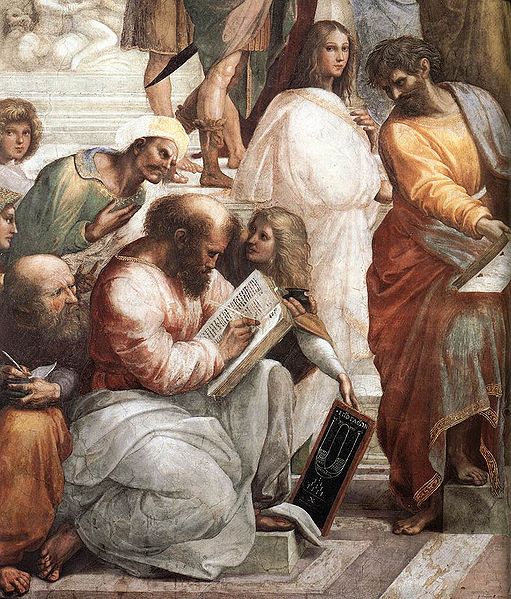
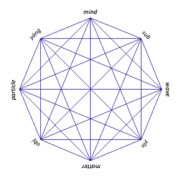
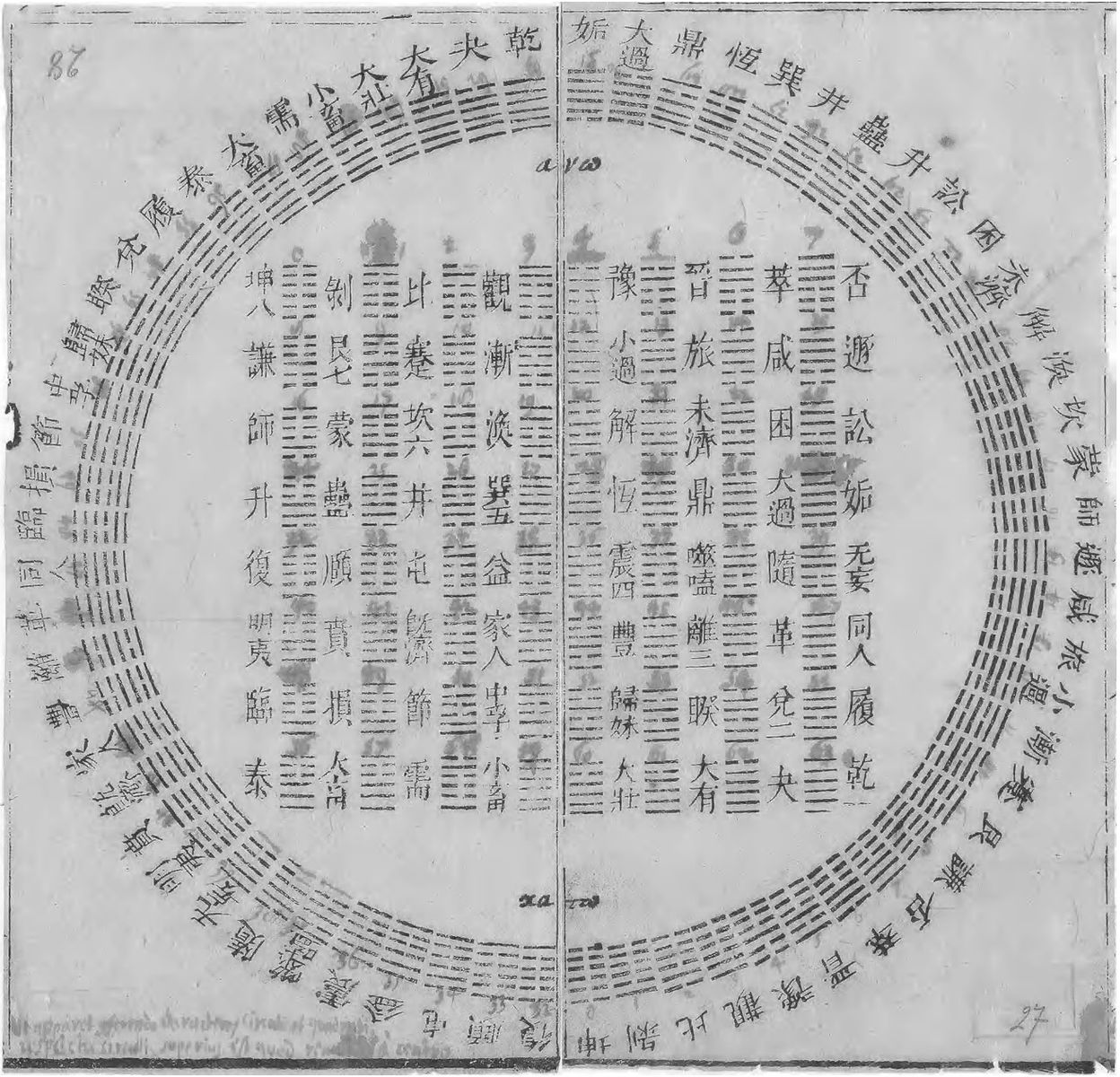
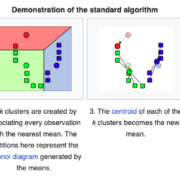

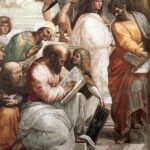

Leave a Reply
Want to join the discussion?Feel free to contribute!